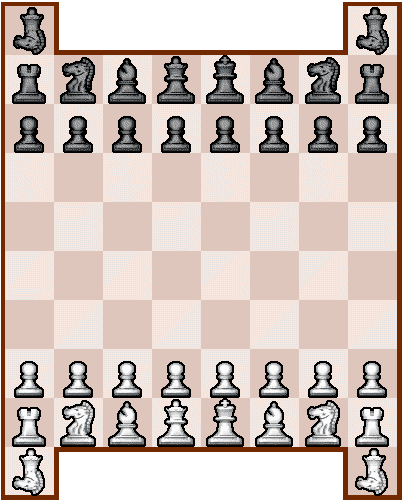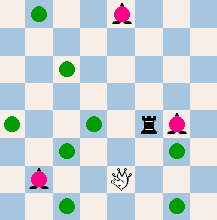

The Constable moves like a nightrider, that is, it can make continuous knight-moves in the same direction. But it cannot capture in this way. Instead it captures like a queen. Its value, it seems, corresponds to rook + knight. Other rules are the same as in standard chess, except for the possible promotion to Constable. The nightrider moves gives it an extreme mobility in congested middlegame positions. As it combines mobility with the power of the queen capture, it is ideal for king-attacks in the middlegame. You can often sacrifice a light piece, à la Michail Tal, if you can follow up the attack with a Constable. As it can only capture as a queen, and not as a knight, this piece is easier to control.
The unusual H-shaped board makes it possible to introduce this piece without giving it undue advantage in the opening, thus avoiding monotonous opening strategies. The extra corner squares (the trenches) are exactly what the majesty has always asked for. The notorious problem of the weak first rank, and the sudden rook mate, is thereby solved. The trenches affect the strategy greatly. Boards which introduce four extra diagonal squares are generally not recommendable, because then the king cannot be mated by a rook. Constable chess, and the new Constable piece, were invented by undersigned, August 2006.
constable [comes stabuli, lit., officer of the stable] a : high officer of a medieval royal or noble household b : the warden or governor of a royal castle or a fortified town c : a public officer usually of a town or township responsible for keeping the peace and for minor judicial duties.
 The Constable moves as a nightrider,
but captures queenwise.
The Constable moves as a nightrider,
but captures queenwise.
• You can download my free Constable Chess program here, (updated 2007-10-18) but you must own the software Zillions of Games to be able to run it (I recommend the download version).
• Don't miss my other chess variants.
© M. Winther (August 2006).